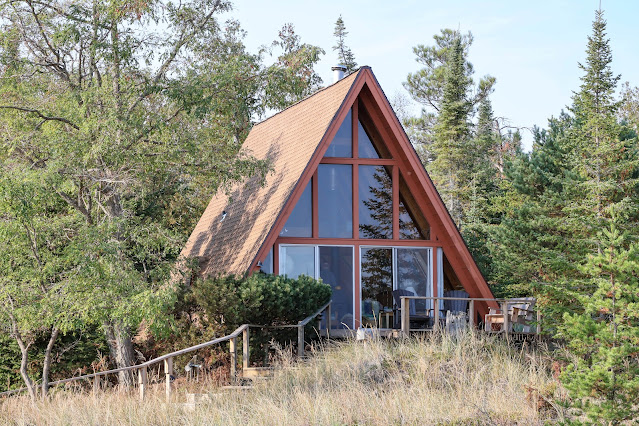In the early 1800s, steamboat traffic on Lake Michigan created an appetite for wood to power their vessels. When cordwood stations on the Manitou Islands became taxed, businessmen looked to Glen Haven to build their next logging settlement. They built an inn, a sawmill, and a long dock into Sleeping Bear Bay.
But the new town didn't thrive until young David Henry Day, an agent from the Northern Transit Company, took over village management in 1878 and lost his heart to Glen Haven. By 1881, Day had purchased most of the NTC properties, including the village of Glen Haven.
The D.H. Day Store became the village’s gathering place for locals and travelers. Besides offering fresh food and meat, it housed the telegraph and post offices. When Day married Eva Farrant in 1889, she preferred living above the store versus the nearby home he’d build for her.
The Sleeping Bear Inn served as a boarding house for dock workers and lumberjacks who worked in the area. Passengers traveling on steamships stayed there too, as did early resorters coming to the area. While the historic lodge was shuttered in the 1970’s, it reopened this summer as a bed and breakfast.
The blacksmith shop was important to Glen Haven because it was where all metal broken tools were repaired on the forge. Horses used to pull logs were also shod there. Like many buildings in the village, it was painted red since it was the cheapest paint available.
Besides the village buildings, the Glen Haven beach and dock were popular meeting places for neighbors to visit and wait for the steamers to arrive. Fishing was also excellent on Sleeping Bear Bay. Tugs like the Aloha were used for gill net fishing at the time, a practice now outlawed due to declining fish populations.
The Sleeping Bear Point Coast Guard Station was located just down the road from the beach. It housed the crew and equipment which would be called upon to save lives of passengers and crews of ships in distress in the Manitou Passage.
Next to the Coast Guard Station, the Life-Saving Station housed huge life boats which were deployed in emergencies. The big doors would swing open and the rescue boats would roll down the tracks to the beach to help those in peril. Both structures make up today’s Maritime Museum.
Besides Day’s love for Glen Haven, he was an avid environmental conservationist. Instead of clearcutting the land, Day left behind young shoots to grow when parent trees were cut down. He also foresaw the decline in lumbering in Michigan and began to diversify. Day built the Glen Haven Canning Company too, where the factory canned the fruit crops of area orchard owners and shipped them to large cities on the Great Lakes.
The D.H. Day Farm was another way Day diversified his business from lumbering. Oswagotchie, the farm’s Indian name, was set on 400 acres three miles south of Glen Haven on M-109. Day grew hay and corn as his main crops to feed his herd of 200 Holsteins and 400 hogs. He’d also planted 5,000 cherry trees on his land. The farm still stands and is one of the most iconic and photographed barns in Michigan.
Like Day, I too lost my heart to Glen Haven. For me, it began in the late 1980s when I rented this still-standing A-frame cottage just down the road from the beach. I’d walk the beach with my dog and kayak Sleeping Bear Bay in awe of the views. It continues to be one of my favorite Lakeshore sites to visit and photograph. I’ve taken a gazillion pictures of the waving beach grass, the canning factory and the farm over the years, each time trying to gain a new perspective. This blog was inspired by the research I’ve been doing for one of my Northwoods Mystery books, and especially Ron Cockrell’ historical study D.H. Day’s Kingdom.










As I commented on the link you posted to Facebook, I love these photographs, and the last one with the personal note was a lovely part of the story.
ReplyDeleteThanks, so much.
ReplyDelete